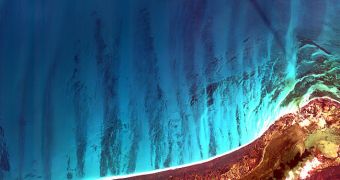South Korea is the newest member of the International Charter 'Space and Major Disasters.' The country took on its official status during a ceremony held on July 7, where it was represented by officials from the Korea Aerospace Research Institute (KARI),
The South Korean space agency operates a number of satellites, which it plans to make available under the international collaboration, for assisting emergency responders in areas that have been affected by natural disasters.
Such services can in very handy during the 2010 Haiti earthquake, the Deepwater Horizon oil spill and, more recently, the March 11, magnitude-9.0 earthquake that struck Japan. What the agency does is make relevant data available to authorities in the affected country.
If a satellite passes over an area, it usually takes some time before that data become available to people in that particular area, if ever. The purpose of the ICSMD is to make such information available within one or two hours of the satellite's pass.
Given that many Earth-observing satellites pass above certain areas more than once per day, authorities can have access to new maps, that show how the landscape is changing. This could be useful when monitoring the progress of wildfires, floods, landslides, avalanches and other such disasters.
The South Korean Ministry of Education, Science and Technology was the organization that guided KARI to adhere to the international partnership. The Charter was founded by the French space agency CNES and the European Space Agency (ESA).
KARI's main contribution to the initiative will be datasets collected by its Kompsat-2 satellite. Science instruments aboard the spacecraft allow it to collect 4-meter-resolution color images and 1-meter-resolution panchromatic photos.
“The Charter in an excellent example of international cooperation in the field of natural disasters, as it has recently been demonstrated in connection with the tsunami in Japan and severe snow in the east coast of Korea,” explained Dr Yougsik Chun.
The KARI official holds an appointment as the director of Satellite Operations & Applications Division at the space agency
“We are proud to have KARI join its space partners in supporting the disaster charter, particularly since the charter has recently illustrated the relevance of space in alleviating human suffering caused by natural and technological disasters,” adds KARI president Dr. Seung Jo Kim.

 14 DAY TRIAL //
14 DAY TRIAL //